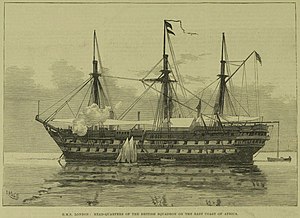
Zanzibar is a Tanzanian archipelago off the coast of East Africa. It is located in the Indian Ocean, and consists of many small islands and two large ones: Unguja and Pemba Island. The capital is Zanzibar City, located on the island of Unguja. Its historic centre, Stone Town, is a World Heritage Site.

Dhow is the generic name of a number of traditional sailing vessels with one or more masts with settee or sometimes lateen sails, used in the Red Sea and Indian Ocean region. Typically sporting long thin hulls, dhows are trading vessels primarily used to carry heavy items, such as fruit, fresh water, or other heavy merchandise, along the coasts of Eastern Arabia, Iran, East Africa, Yemen and coastal South Asia. Larger dhows have crews of approximately thirty and smaller ones typically around twelve.

The Anglo-Zanzibar War was a military conflict fought between the United Kingdom and the Sultanate of Zanzibar on 27 August 1896. The conflict lasted between 38 and 45 minutes, marking it as the shortest recorded war in history. The immediate cause of the war was the suspicious death of the pro-British Sultan Hamad bin Thuwaini on 25 August 1896 and the subsequent succession of Sultan Khalid bin Barghash. The British authorities preferred Hamoud bin Mohammed, who was more favourable to British interests, as sultan. The agreement of 14 June 1890, instituting a British protectorate over Zanzibar, specified that a candidate for accession to the sultanate should obtain the permission of the British consul; Khalid had not fulfilled this requirement. The British considered this a casus belli and sent an ultimatum to Khalid demanding that he order his forces to stand down and leave the palace. In response, Khalid called up his palace guard and barricaded himself inside the palace.
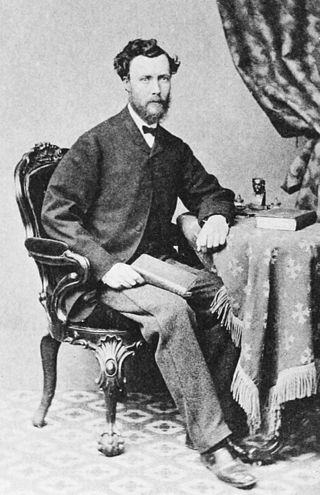
Sir John Kirk was a British physician, naturalist, companion to explorer David Livingstone, and a British administrator in Zanzibar, East Africa, where he was instrumental in ending the slave trade in that country, with the aid of his political assistant, Ali bin Saleh bin Nasser Al-Shaiban, and Alexander Mackay, a missionary in Zanzibar.
People have lived in Zanzibar for 20,000 years. The earliest written accounts of Zanzibar began when the islands became a base for traders voyaging between the African Great Lakes, the Somali Peninsula, the Arabian Peninsula, Iran, and the Indian subcontinent. Unguja offered a protected and defensible harbour, so although the archipelago had few products of value, Omanis and Yemenis settled in what became Zanzibar City as a convenient point from which to trade with towns on the Swahili Coast. They established garrisons on the islands and built the first mosques in the African Great Lakes Region.
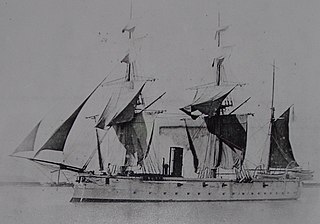
HMS Dryad was a 4-gun Amazon-class screw sloop, launched at Devonport in 1866. She served on the East Indies and North American Stations, taking part in the Abyssinian War, a confrontation with the French at Tamatave and the Egyptian War. She was sold for breaking in 1885.

Arthur Edward Harington Raikes was a British army officer who served as acting prime minister, vizier and first minister to numerous Sultans of Zanzibar. Serving in the Wiltshire Regiment Raikes took up a position as brigadier-general in Zanzibar's army and fought on the pro-British side in the Anglo-Zanzibar War. He also helped to negotiate the demarcation of the boundary between Zanzibari and British territory on the African mainland. Raikes was awarded honours by several nations in the course of his work.

Sir Lloyd William Mathews, was a British naval officer, politician and abolitionist. Mathews joined the Royal Navy as a cadet at the age of 13 and progressed through the ranks to lieutenant. He was involved with the Third Anglo-Ashanti War of 1873–4, afterwards being stationed in East Africa for the suppression of the slave trade. In 1877 he was seconded from the navy to Sultan Barghash of Zanzibar in order to form a European-style army; he would remain in the employment of the government of Zanzibar for the rest of his life. His army quickly reached 6,300 men and was used in several expeditions to suppress the slave trade and rebellions against the Zanzibar government.
HMS Helmuth was a German tug that the Royal Navy captured at the beginning of World War I and armed as a picket boat. She served in the East African campaign including the battles of Zanzibar and Tanga, she survived a German attack at Dar es Salaam, and took part in blockading SMS Königsberg in the Rujifi Delta. In 1916 she took part in an amphibious assault on the coastal town of Bagamoyo.
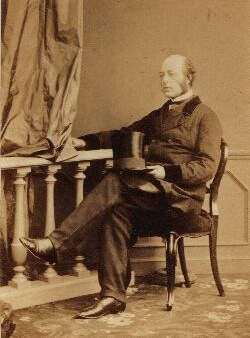
Admiral Sir Arthur Cumming was an officer of the Royal Navy.
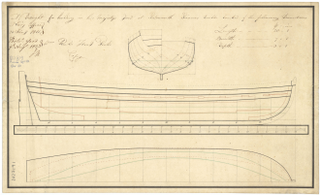
As a ship's boat, the pinnace is a light boat, propelled by oars or sails, carried aboard merchant and war vessels in the Age of Sail to serve as a tender. The pinnace was usually rowed but could be rigged with a sail for use in favorable winds. A pinnace would ferry passengers and mail, communicate between vessels, scout to sound anchorages, convey water and provisions, or carry armed sailors for boarding expeditions. The Spanish favored them as lightweight smuggling vessels while the Dutch used them as raiders. In modern parlance, "pinnace" has come to mean an auxiliary vessel that does not fit under the "launch" or "lifeboat" definitions.
Two ships of the Royal Navy have borne the name HMS Pantaloon:
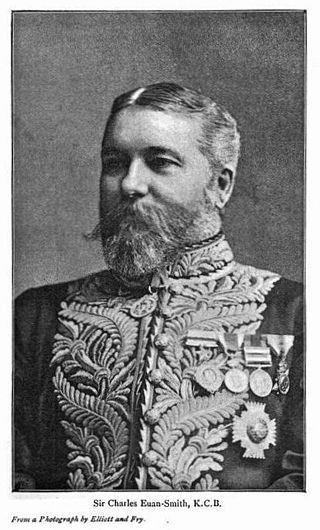
Sir Charles Euan-Smith was a British soldier and diplomat.

The siege of Mombasa was an attack on the Portuguese city of Mombasa and Fort Jesus by the army of the Ya'rubid ruler of Oman, Saif I bin Sultan, from 13 March 1696 to 13 December 1698.

HMS Daphne was an Amazon-class sloop, of the Royal Navy. She was in service from 1866 to 1879.

SMS Carola was the lead ship of the Carola class of steam corvettes built for the German Kaiserliche Marine in the 1880s. Intended for service in the German colonial empire, the ship was designed with a combination of steam and sail power for extended range, and was equipped with a battery of ten 15-centimeter (5.9 in) guns. Carola was laid down at the AG Vulcan shipyard in Stettin in 1879, launched in November 1880, and completed in September 1881.

Petro Kilekwa was an African man who, after having been enslaved, became a teacher and later an Anglican priest. His autobiography, published in 1937, was titled Slave Boy to Priest: The Autobiography of Padre Petro Kilekwa.
Atkins Hamerton was a British soldier and diplomat who served as British consul in Zanzibar from 1841 to 1857. He is known for his role in the initially unsuccessful British attempt to end the Arab slave trade between Zanzibar and the Persian Gulf region.

The Indian Ocean slave trade, sometimes known as the East African slave trade, involved the capture and transportation of predominately black African slaves along the coasts, such as the Swahili Coast and the Horn of Africa, and through the Indian Ocean. The areas impacted included East Africa, Southern Arabia, the west coast of India, Indian ocean islands and southeast Asia including Java.

Slavery existed in the Sultanate of Zanzibar until 1909. Slavery and slave trade existed in the Zanzibar Archipelago for at least a thousand years. When clove and coconut plantations became a big industry on the islands, domestic slavery expanded to a point where two thirds of the populations were slaves. Zanzibar was internationally known as a major player in the Indian Ocean slave trade, where slaves from the Swahili coast of Eastern Africa were trafficked across the Indian Ocean to Oman in the Arabian Peninsula during the Zanzibar slave trade.
